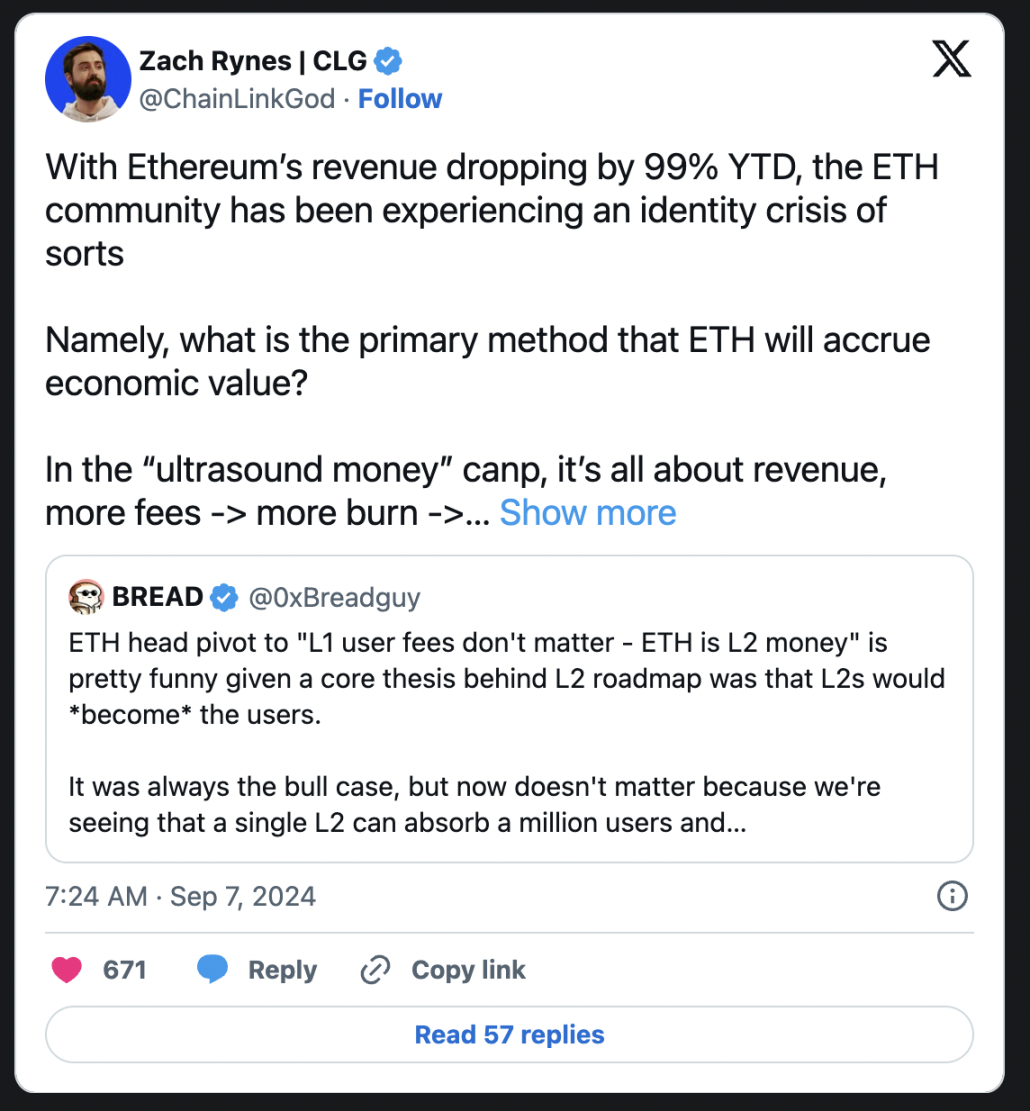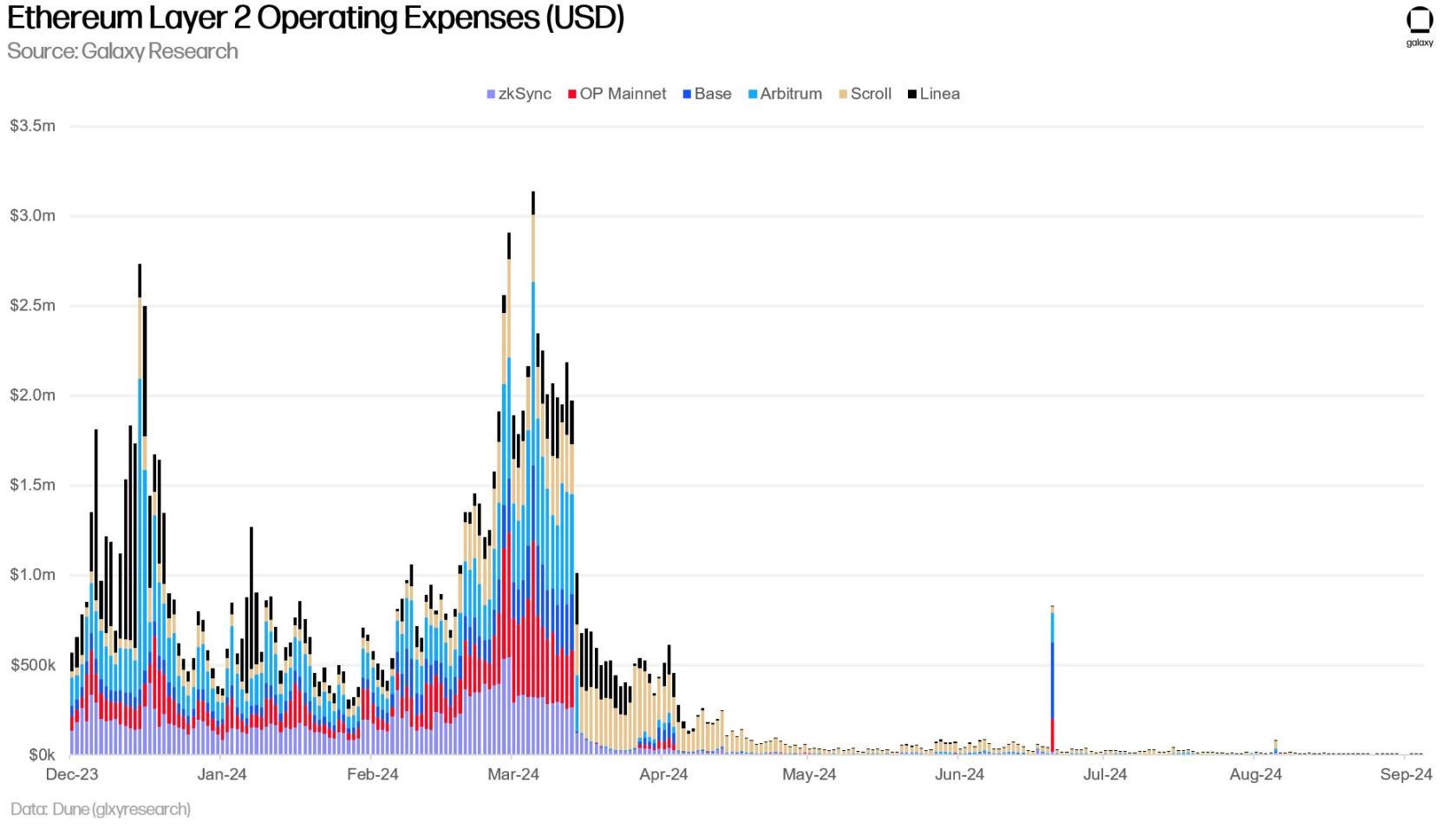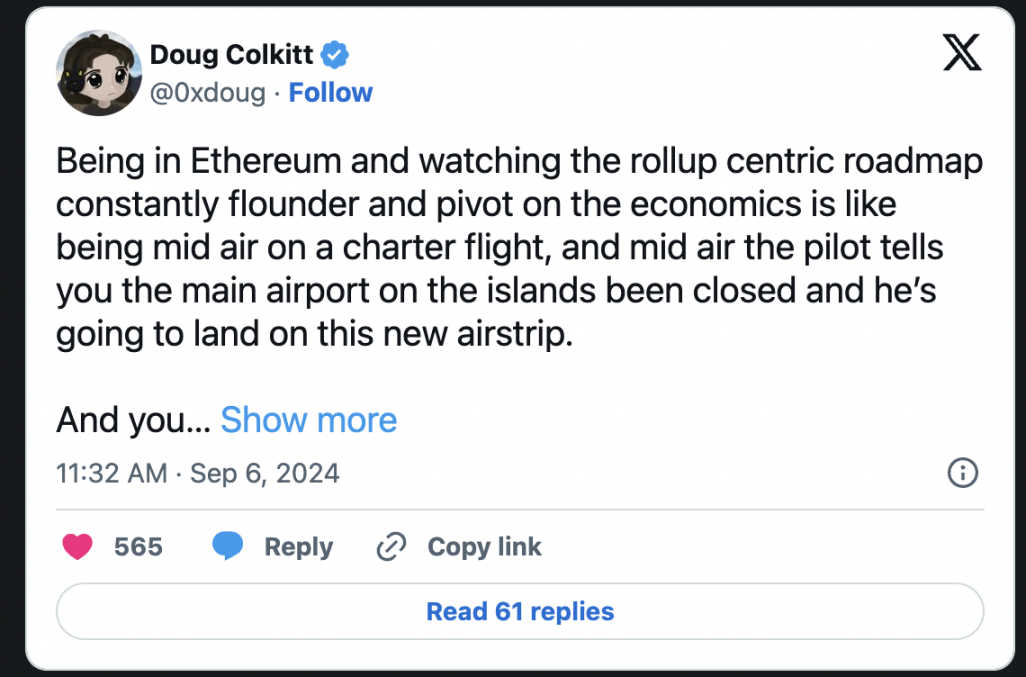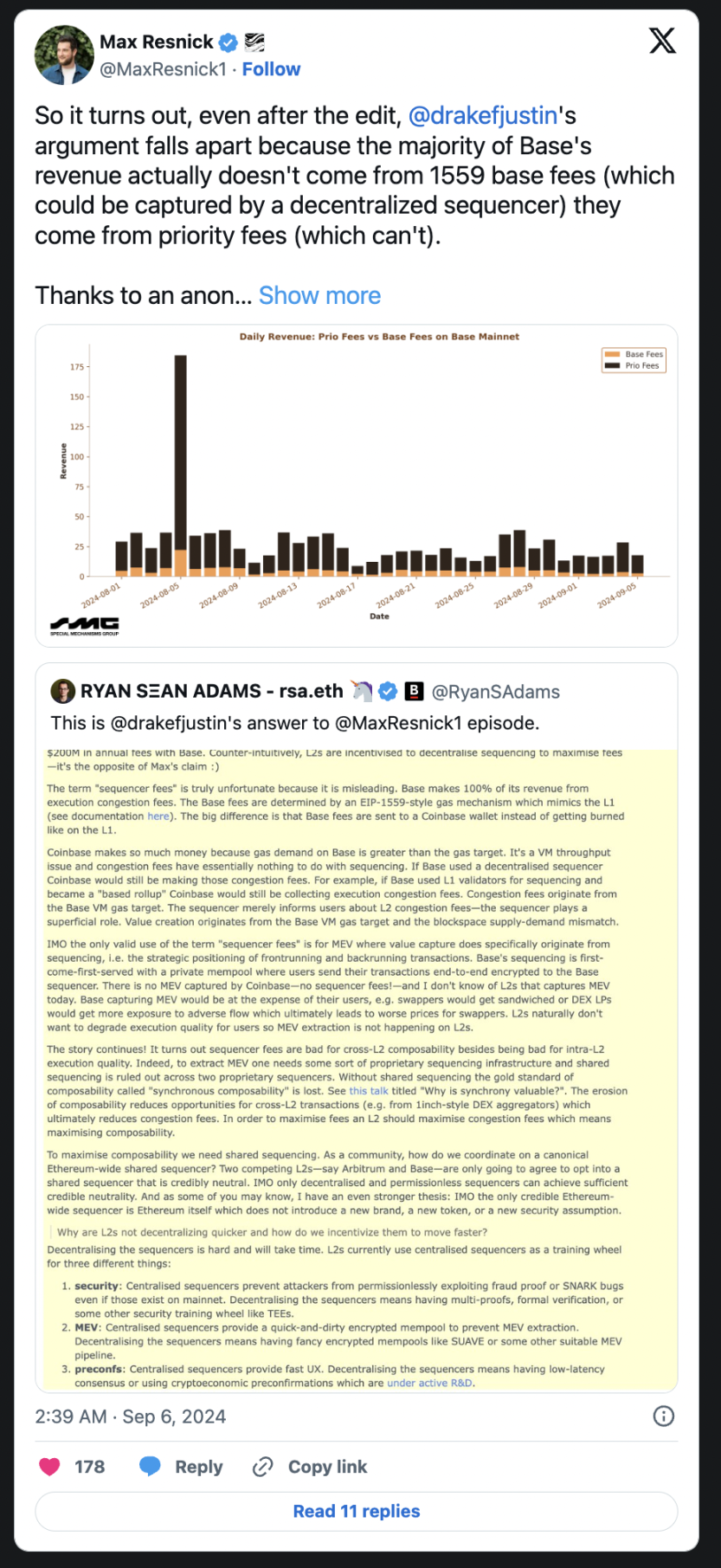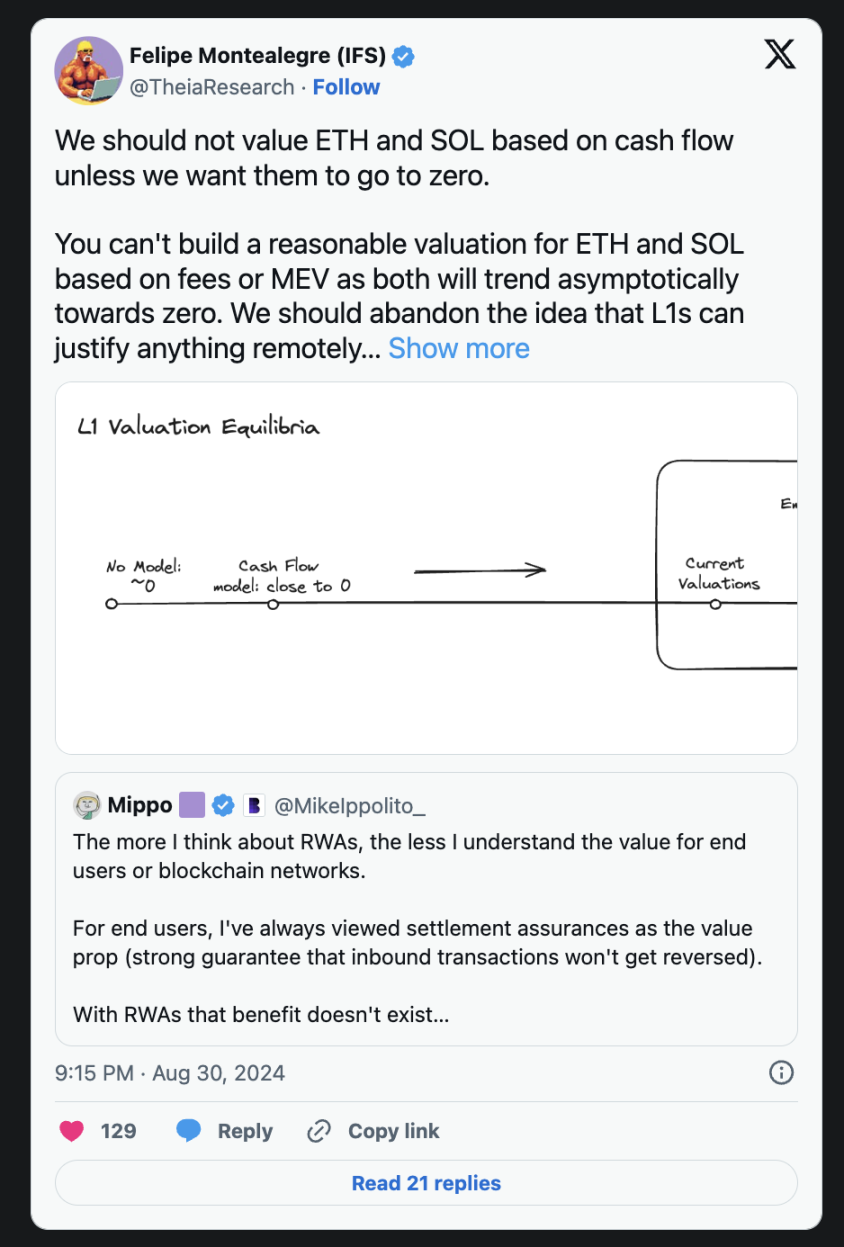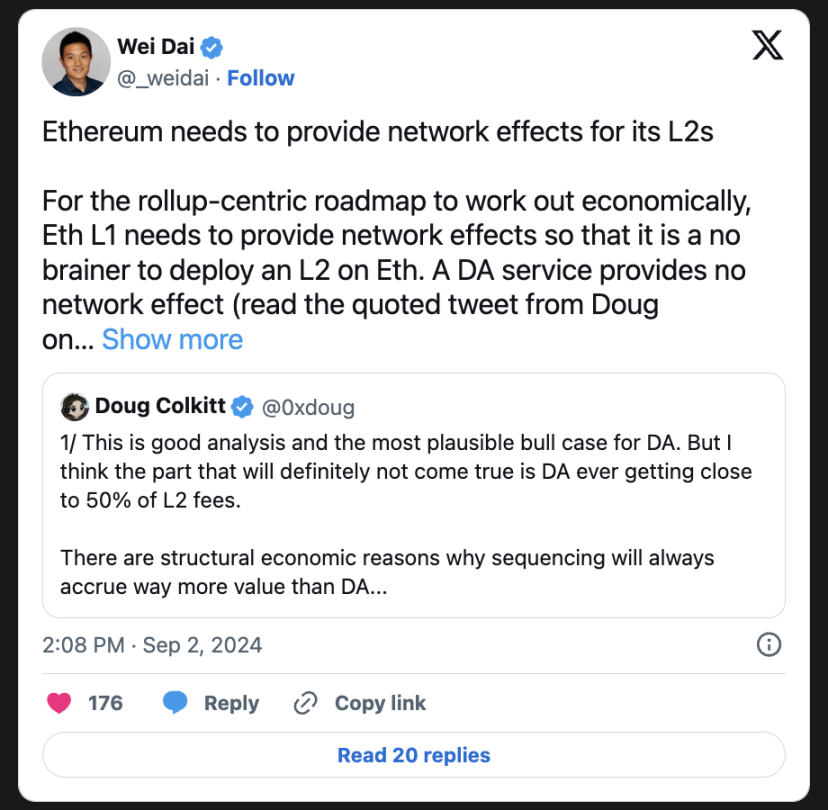Original author: Ceteris
原文翻訳: ルフィ、フォーサイトニュース
Last year in the Infrastructure Year Outlook report, I wrote a special chapter on L2 Wars, in which I elaborated on my views on the Rollup field and the trends in the coming year. The main points are as follows:
-
Blast is a hybrid of the Rollup architecture and will lead to the end of the kumbaya era.
-
The L2 ecosystem will become more fragmented and isolated, and L2 will launch its own cross-chain/interoperability standards and SDKs to launch new chains/L3.
-
Rollups require an alternative data availability layer (DA) to scale.
-
DA will disappear as a source of value accumulation. DA will usher in disruptive innovation, and charging a premium for DA will no longer be feasible.
-
Ethereum’s new bull market theme is “global proof-of-stake validation layer and currency”.
-
The value accumulation of the DA layer will be limited.
-
If all value is aggregated in the sorting layer, then the value accumulation of L2 tokens is theoretically positive.
The views in this article are outdated. Ethereum has experienced many crises, and the above views have been repeatedly mentioned and discussed. In fact, you can see that a large part of the Ethereum community has shifted its attention to how to expand L1 instead of transferring value to Rollup.
https://twitter.com/ChainLinkGod/status/1832198208287863174
However, everyone is watching and discussing this, it’s no longer really an “alpha” or contrarian view. So, what did we see today and what to do next?
Rollup Status
First, revenue. What happened to Ethereum’s revenue after EIP-4844? The following chart from Galaxy gives an intuitive answer, DA is no longer an important value driver for the Ethereum economy.
Is this an entirely bad thing? No! Ethereum has no choice. As we’ve highlighted, DAs have undergone “disruptive innovation,” which means that charging a premium has become more challenging. While we’re sure Ethereum will still be able to charge higher fees than other DA layers so that Rollups can inherit the full security of Ethereum, it’s not clear to what extent Rollups will be able to do this. The main benefit of a shared DA layer is interoperability. By sharing a DA layer, cross-chain becomes more secure, and economies of scale can be achieved this way. Again, while this is a key benefit, no one really knows how much this benefit is worth. Will Rollups pay 10 times the fees of other DA layers? Or 100 times? There is a definite answer to this question, we just don’t know how much it is.
Therefore, the reduction of Ethereum DA fee income is natural, and it has no choice. Now, some people have begun to question the Ethereum Rollup roadmap, represented by Max Resnick and Doug Colkitt.
https://twitter.com/0x doug/status/1831898285130330367
https://twitter.com/MaxResnick1/status/1831764059664085461
Now that everyone agrees on the impact of DA’s disruptive innovation on the Ethereum economy, is it doomed to fail?
The Path Forward for Ethereum
As we said in our annual outlook report, the theme of Ethereum now boils down to Global Proof-of-Stake Validation Layer and Currency. What does this mean exactly?
OK, that’s not entirely true, but we do know what it means. Ethereum is the most decentralized and oldest base layer, which gives it a competitive advantage over all other blockchains for asset issuance and proof of proof. Even if the economics aren’t as strong, Ethereum is still a premium asset. However, removing all the execution work would return Ethereum to its pre-EIP-1559 economic model, where ETH is mostly recycled.
https://twitter.com/ceterispar1bus/status/1815855290577031247
That’s why we’re starting to see a lot of renewed focus on L1 scaling and moving applications back to Ethereum L1. We know that execution on L1 incurs fees. What we don’t know is whether the world will adopt ETH as money. If every Rollup used ETH as money, it would become a non-state-backed currency used around the world like BTC. To me, this is an optimistic and possible outcome, the challenge is that whether Vitalik, Justin Drake, you, or I think ETH is money is largely irrelevant.
Will ETH become the world currency?
We return to the previous question: Why are people trying to scale L1 again and increase L1 fees? Is this correct? Felipe from Theia argues that if we value L1 tokens based solely on MEV and fees, they will go to zero anyway, so the only thing that can justify their valuation is to become an emerging market reserve asset, i.e. currency. I support this view.
https://twitter.com/TheiaResearch/status/1829508309696786700
Finally, Wei Dai believes that for a Rollup-centric roadmap to be economically viable, Ethereum needs to provide network effects for L2 in two ways:
-
Providing composability and censorship resistance based on ordering.
-
More robust shared settlement, where assets issued on one L2 can also be used on other L2s to eliminate fragmentation.
This is the only way for Ethereum to work in the long term.
https://twitter.com/_weidai/status/1830488020556083533
I think all of the above are valid points, but I don’t know what the real answer is. There is a view that if Ethereum focuses on scaling L1 again, it will just become a “worse Solana” because Ethereum will never be able to compete with Solana in terms of L1 execution. I don’t think anyone really knows the outcome, people just believe in different things. Ultimately, the market will decide what is valuable.
This article is sourced from the internet: The battle is escalating, revealing the current status of the Ethereum L2 war
関連:Black Mythが世界を席巻、国内のトレンドはWeb3ゲーム分野にも吹き込む
原作者:0x Facai 2024年8月20日、何百万人ものプレイヤーが待ち望んでいた中国の3A傑作『Black Myth: Wukong』がついに正式に発売されました。同ゲームのオンラインプレイヤー数は一時140万人を超え、Steam史上4位のオンラインプレイヤー数を記録しました。中国だけでなく、『Black Myth: Wukong』はSteamのグローバルベストセラー商品リストでも上位にランクインし続けています。また、本日のYoutube生放送のホームページでは、ほぼすべてが『Black Myth』のゲーム生放送です。最初の真の3A傑作として、『Black Myth』は初戦でIGNなどの海外メディアから比較的高い評価を受け、数え切れないほどの中国プレイヤーがため息をつきました。ゲームをプレイするときに、ついにオンラインで検索する必要がなくなった…
